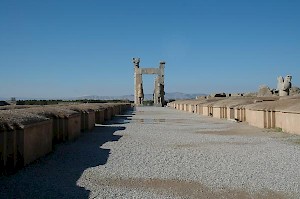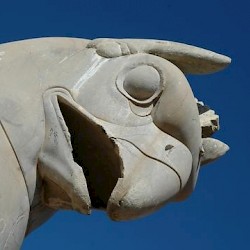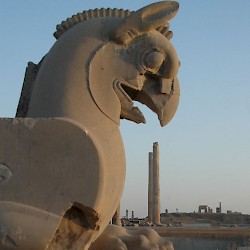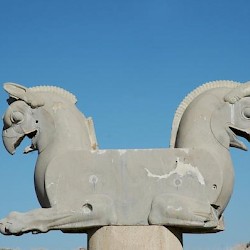Persepolis, Army Road
Persepolis (Old Persian Pârsa, modern Takht-e Jamshid): Greek name of one of the capitals of the ancient Achaemenid Empire, founded by king Darius the Great (r.522-486 BCE). There were several satellite sites, Naqš-e Rustam and Takht-e Rustam.

One of the constructions at Persepolis that remained unfinished, was the "Army road" or "Procession road". It started at the Gate of All Nations and continued to the east, where it was meant to make a sharp turn to the south. Through a new gate, which also remained unfinished, one would have reached the Hall of Hundred Columns.
Although this project remained unfinished when the Macedonians of Alexander the Great sacked the palaces in the spring of 330, two large capitals representing the heads of an eagle-griffin were ready. For reasons that are unclear to us, they were buried, as if the makers believed the Macedonians should not see them - but why? Alternatively, they were made for a building project, but rejected - but, again: why?
These capitals, regarded by some as early representations of the Homa bird of medieval folklore, have become the symbol of Iran Air.
 Persepolis, Army Road, Homa |
 Persepolis, Army Road, Homa |
 Persepolis, Army Road, Homa |